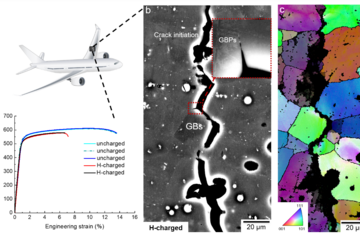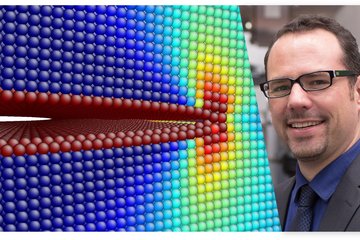Multiscale investigation of impact mitigation strategies: Biomimicking muskox head
Biological materials in nature have a lot to teach us when in comes to creating tough bio-inspired designs. This project aims to explore the unknown impact mitigation mechanisms of the muskox head (ovibus moschatus) at several length scales and use this gained knowledge to develop a novel mesoscale (10 µm to 1000 µm) metamaterial that can mimic the high energy absorption characteristics of the muskox head without failure between strain rates of 0.001/s and 1000/s.

Male muskoxen exhibit a remarkable ability to withstand high-speed collisions with minimal brain injury, despite their large size and swift movements. This outlines their unique capacity for absorbing and mitigating high-energy impacts, rendering them an intriguing subject for studying natural impact mitigation strategies. Such research could potentially inspire the development of engineered materials with exceptional energy absorption and impact mitigation capabilities. The muskox's head is composed of various materials, including keratin, cortical bone, and trabecular bone. Each of these components will be meticulously examined across multiple scales — from the nano- to the meso-level — to uncover their architectural, chemical, and mechanical characteristics. Notably, the hierarchical structure of horn keratin in muskox has not been previously explored. In addition, there's a lack of investigation into the mechanical behavior of these materials at micro- and nanoscales under temperatures typical for muskox (-30 to 45°C) and relevant high strain rates (~1000/s). This project aims to resolve the hierarchical structure of muskox skull and utilize it as a blueprint for constructing artificial metamaterial architectures capable of withstanding high-energy impacts (with specific energy absorption exceeding 20 J/g) without failure between strain rates of 0.001/s and 1000/s. To accomplish this, Dr. Ramachandramoorthy (MPIE, Germany) and Dr. Schwiedrzik (Empa, Switzerland), will adopt a dual-track approach, leveraging the diverse research expertise available at both the MPIE and Empa. MPIE will focus on nano-to-microscale material testing under extreme strain rates, complemented by advanced chemical and structural characterisation. While, Empa will conduct micro-to-mesoscale biomechanical simulations and experiments, dynamic strength analyses, and the design and synthesis of architectured materials. This collaborative effort, combining complementary skill sets, is crucial for effectively addressing the multifaceted challenges posed by this research endeavor.














